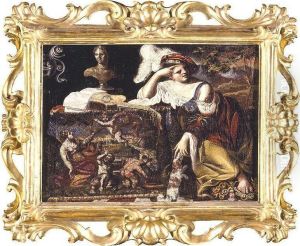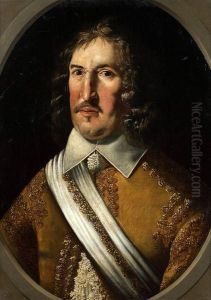Pseudo Caroselli Paintings
Pseudo Caroselli is not a traditional artist in the sense that it refers to a specific individual with a known biography. The term 'Pseudo Caroselli' is actually used to describe a group of artworks, primarily from the 17th century, that were once attributed to the Italian painter Angelo Caroselli or were created in his style. Angelo Caroselli (1585–1652) was a Baroque painter from Rome, known for his versatility and ability to mimic the styles of other contemporary artists, which may have contributed to the confusion surrounding the authorship of these works.
The use of the prefix 'pseudo' indicates that the works attributed to Caroselli were later believed not to have been painted by him but rather by unknown artists imitating his style or falsely using his name. This practice was not uncommon in the art world, especially during the Renaissance and Baroque periods, when successful styles or names would be used to market artworks.
The biography of the actual Angelo Caroselli includes his birth in Rome in 1585 and his death in the same city in 1652. During his lifetime, Caroselli was recognized for his eclectic approach, painting a variety of subjects including religious and mythological scenes, genre paintings, and portraits. His ability to adapt different styles made his own works quite diverse and, at times, difficult to attribute.
Because 'Pseudo Caroselli' refers to a category of artworks rather than an individual artist, there is no specific birth or death date associated with this term. The works attributed to Pseudo Caroselli would have been created during or slightly after Caroselli's active period as an artist, primarily in the first half of the 17th century. These pieces likely stem from an artistic circle or followers in Rome who were influenced by Caroselli's technique and may have sought to capitalize on his success.
The study of Pseudo Caroselli artworks involves art historical detective work, using stylistic analysis and other research methods to determine the actual creators of these paintings. This can help to shed light on the practices of art production and attribution in the 17th century, as well as to better understand Caroselli's own influence on his contemporaries and followers.

